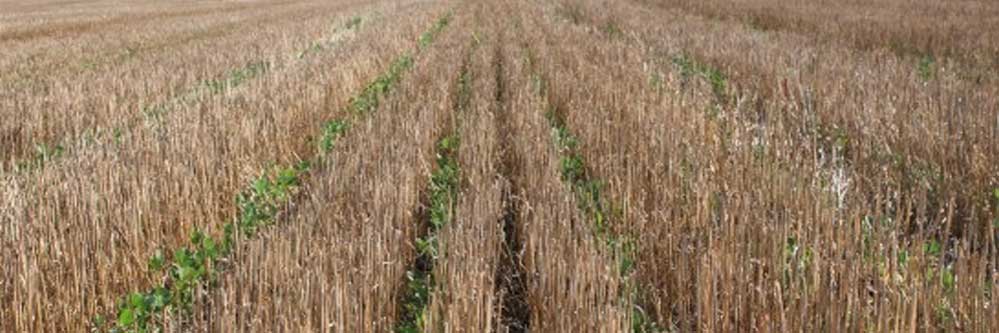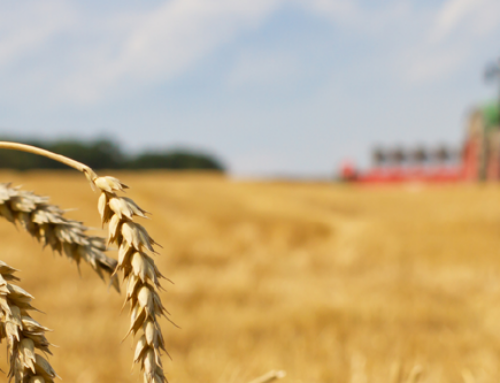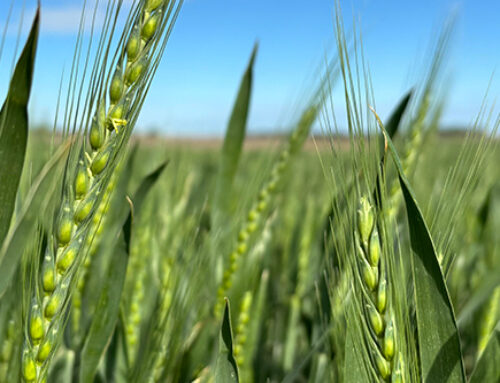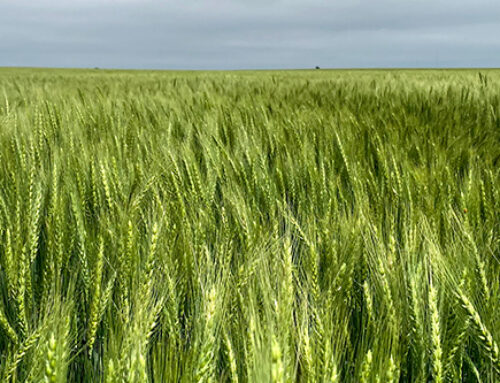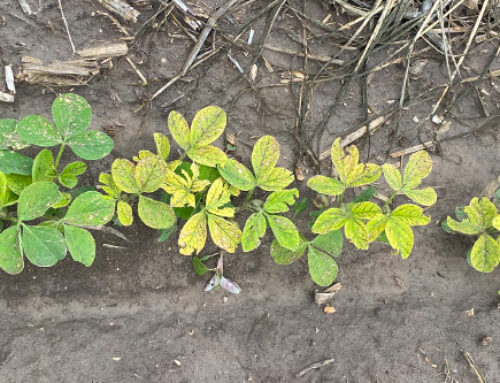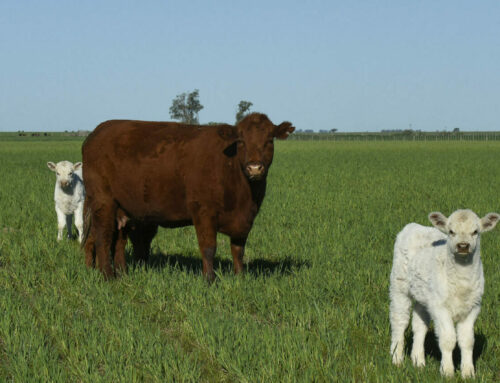With the recent uptrend in soybean prices, many producers are showing more incentive to plant double crop (DC) soybeans following irrigated wheat this season. Recent rainfall and milder temperatures have allowed many producers to save a significant amount of water during the flowering and grain fill stages of their wheat crop. In southwest and south central Kansas, we typically have already used five to seven inches, sometimes up to ten acre inches of water on the wheat. However, this year most wells have only pumped around four to six inches of water, some less than that. This allows for more flexibility in scheduling water for the second crop.
There are many important things to consider when double cropping soybeans behind wheat. One of the most important issues is planting date. The earlier you can get the beans in behind the wheat, the better. Soybean growth and maturity is determined by day-length or photoperiod. There is overwhelming evidence to show that yield potential begins to decrease the later the beans get planted. Choosing wheat varieties that come off earlier have shown to be beneficial to producers wanting to get back to soybeans.
Another thing to consider in double cropping soybeans is picking the maturity. For our area, soybeans in the late group III or early group IV categories have typically shown better yield potential. One reason is these varieties usually get taller and set more pods than the earlier group III’s. This is especially true in fields that are a little sandier.
Seeding rate is another important component to consider in your double crop soybean plan. Since DC beans are planted later than full season beans and won’t have as many days to flower, increasing the seeding rate (more flowering plants) has shown to be advantageous. Depending on how much water is left, we will normally drop anywhere from 190,000 to 220,000 seeds per acre. Seeding rate also depends on whether the beans are drilled versus planted in rows. I typically recommend dropping the higher rate range when drilling, especially in a no-till situation. If the beans are to be planted in rows, I will use the lower seeding rate range.
As with full season soybeans, a sound herbicide and fertility plan is vital in the overall goal and success of your DC soybean crop. Typical DC soybean yields that are seen in this area range from 45 to 65 bushel per acre. As you go west, you should expect less yield potential. With thinner margins, it becomes even more important for the producer and agronomist to lay out a fertility and herbicide plan for this type of yield environment.
Insect control seems to play a somewhat larger role in DC beans. Green cloverworm, corn earworm, beet armyworm, grasshoppers, stinkbugs, and woolybear caterpillars are just some of the insects that can be problematic. Leaf feeding from grasshoppers and worms during the vegetative stages can be detrimental if left unchecked. Scouting early during initial pod development and later into pod set are among the best times to identify and treat for the pod feeding species.
Residue management is another factor to consider when planting DC soybeans. If the beans are to be strip tilled or no-tilled, it is important that when harvesting the wheat, leave as much standing stubble as possible. Leaving a mess behind the combine can be problematic when no-till planting because it allows for a higher likelihood of hair pinning trash in the seed slot.
Visit with your Crop Quest Agronomist to come up with a sound strategy to use when making these important decisions, so you have success with your double crop soybeans.
Written by: Brady Miller
Featured Image by: Soy Checkoff
